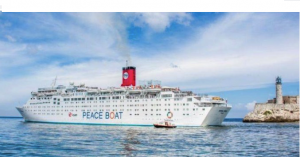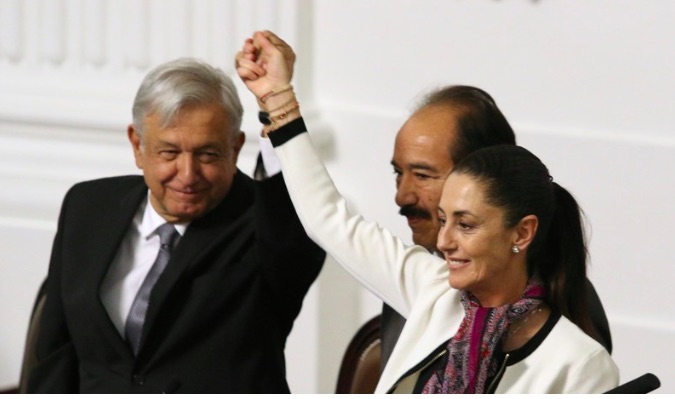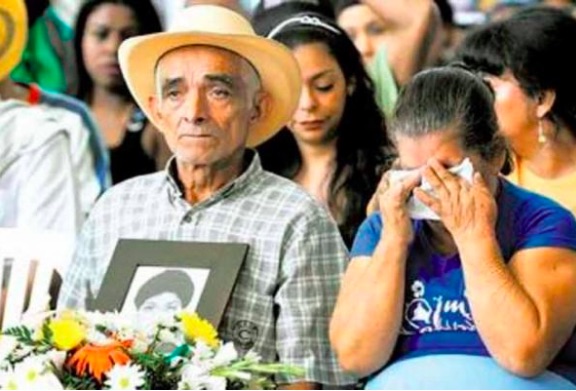. .DISARMAMENT & SECURITY. .
An article from Granma
The danger posed to the world by the existence of nuclear weapons marked the focus of the debate in the Forum for Peace and Revolution, organized by the Japanese Non-Governmental Organization (NGO), Peace Boat, which this November docked at the port of Havana for the nineteenth time, and the second this year.
A message, signed by several civil society organizations, including the Cuban Institute of Friendship with the Peoples, the Cuban Movement for Peace, and the Cuban Association of the United Nations, reiterated Cuba’s firm commitment to strengthening and consolidating international treaties on disarmament.

Departure of the Peace Boat, November 4, 2018, with 1,200 passengers from 22 countries on board. The Boat headed to Jamaica after its stay in Havana. Photo: Orlando Perea
“Seventy-three years have passed since the criminal atomic bombings of the cities of Hiroshima and Nagasaki, and humanity continues to be threatened by the existence of more than 14,400 nuclear weapons, of which 3,750 are deployed and almost 2,000 are on operational alert,” read the text released in the presence of two survivors of the 1945 attacks on Japan.
In addition, young people were called on to join this struggle, raise awareness regarding the threat of a nuclear disaster, and defend humanity’s right to a future of peace. “Together with the nations that long for an end to all wars, and with the power of civil society at the international level, we will continue to demand that nuclear weapons prohibition agreements be complied with until their total elimination, and we will contribute to the construction of a culture of peace around the world,” highlighted the Cuban message.
The heartbreaking and eloquent testimony of those who experienced the horrors of the atomic attacks on Hiroshima and Nagasaki, known as hibakushas, moved those present in the forum, as they described horrific images of walking among a multitude of corpses and burned people, whose faces no longer resembled those of human beings, screaming desperately for water.
Michiko Tsukamoto and Tamiko Sora were just girls at the time of the explosion, but it remains present in their memory. They suffered the loss of their loved ones, and today are among the few remaining survivors. They continue to talk about the tragedy because they recognize that the magnitude of the atomic attack has not yet been fully understood by all.
The Forum was also attended by Mako Ando, a Japanese youth representative committed to a world free of nuclear weapons, who works to raise awareness of the dangers posed if humanity fails to denuclearize. Referring to the hibakushas, she noted: “They suffer when they tell their stories, but they do so again and again because they do not want anyone else to experience such barbarism.”
(Continued in right column)
(Click here for the Spanish version of this article)
Question related to this article:
Peace Boat: Building a Culture of Peace around the World
(Continued from left column)
Speaking on the panel, D.Sc Leyde Rodríguez Hernández condemned the atrocities of Hiroshima and Nagasaki: “We live in a time of enormous threats to international peace and security. The United States, the same power that has imposed an unjust and illegal economic, commercial, and financial blockade on the Cuban people, causing enormous human and material damages, has taken the initiative to destroy multilateralism in international relations and, with its devastating policy, dismantle the system of international treaties and agreements that served as a foundation for peace and security after WWII.”
He explained that nuclear weapons and missile defense systems today represent a serious threat to humanity, and the fight for their prohibition and total elimination should be of the highest priority, as a duty and a right of the peoples.
“The maintenance and modernization of nuclear weapons consumes much of the resources that could and should be destined for economic development, job creation, the reduction of poverty and hunger, health, education, and to prevent and combat natural disasters caused by global climate change. These resources should be redirected toward the development and fulfillment of the Sustainable Development Goals included in the 2030 Agenda,” the vice-rector of the Higher Institute of International Relations added.
The Forum for Peace and Revolution was dedicated to commemorating the 60th anniversary of the Cuban revolutionary triumph, the 73rd anniversary of the criminal U.S. bombings of Hiroshima and Nagasaki, and to the memory of Comandante en Jefe Fidel Castro, who received members of the boat twice (in 2010 and 2012).
Natsue Onda, director of this Peace Boat trip, condemned the interventionist policy of the U.S. blockade against Cuba, and said she was pleased to hold the event aboard the ship, in the presence of so many Cubans. She highlighted the friendship between Cuba and the organization, who share the same commitments in this field.
The Peace Boat has been visiting Cuba since 1989, and this is its 99th voyage around the world, carrying a message of peace and friendship. On this occasion, the ship was carrying 1,200 passengers of 22 nationalities (most of them Japanese), who toured different historic and tourist sites of Havana, and exchanged with community organizations related to senior citizens, culture, and with students.
In a press conference, travel coordinator Adrián Godínez stressed that passengers were very interested in visiting the island, thanks to the stories of previous participants, who highlighted the warm welcome received. Other motivations to visit include the popularization of Cuban culture on the Asian continent, especially salsa music, and interest in the history of the Cuban Revolution and its leaders.
The Peace Boat promotes its voyages online, on posters in public spaces, and through the 11 friendship with Cuba organizations that operate in Japan. The NGO Peace Boat received the Order of Solidarity awarded by the Council of State of the Republic of Cuba in 2009.
As a result of the first meeting with passengers of the ship in 2010, the historic leader of the Revolution, Fidel Castro, wrote a reflection titled “We will never forget,” in which he noted: “Now, as for your slogan – which, in my view has very special value, ‘Learn from past wars to build a future of peace,’ will undoubtedly always have meaning – at this moment it is more relevant than ever. I would dare say, without fear of being mistaken, that never in the history of humanity was there such a dangerous moment as this…”
 Photo: UNESCO Mexico Frédéric Vacheron, Representative from UNESCO Mexico (left); Sergio Mayer, President of the Commission of Culture and Cinematography (center, wearing glasses), Francisco Guerra, Coordinator of the World Embassy of Activists for Peace in Mexico; Bertha Rodríguez, Sria. Gral. Of AAPAUNAM (checkered jacket).
Photo: UNESCO Mexico Frédéric Vacheron, Representative from UNESCO Mexico (left); Sergio Mayer, President of the Commission of Culture and Cinematography (center, wearing glasses), Francisco Guerra, Coordinator of the World Embassy of Activists for Peace in Mexico; Bertha Rodríguez, Sria. Gral. Of AAPAUNAM (checkered jacket).







